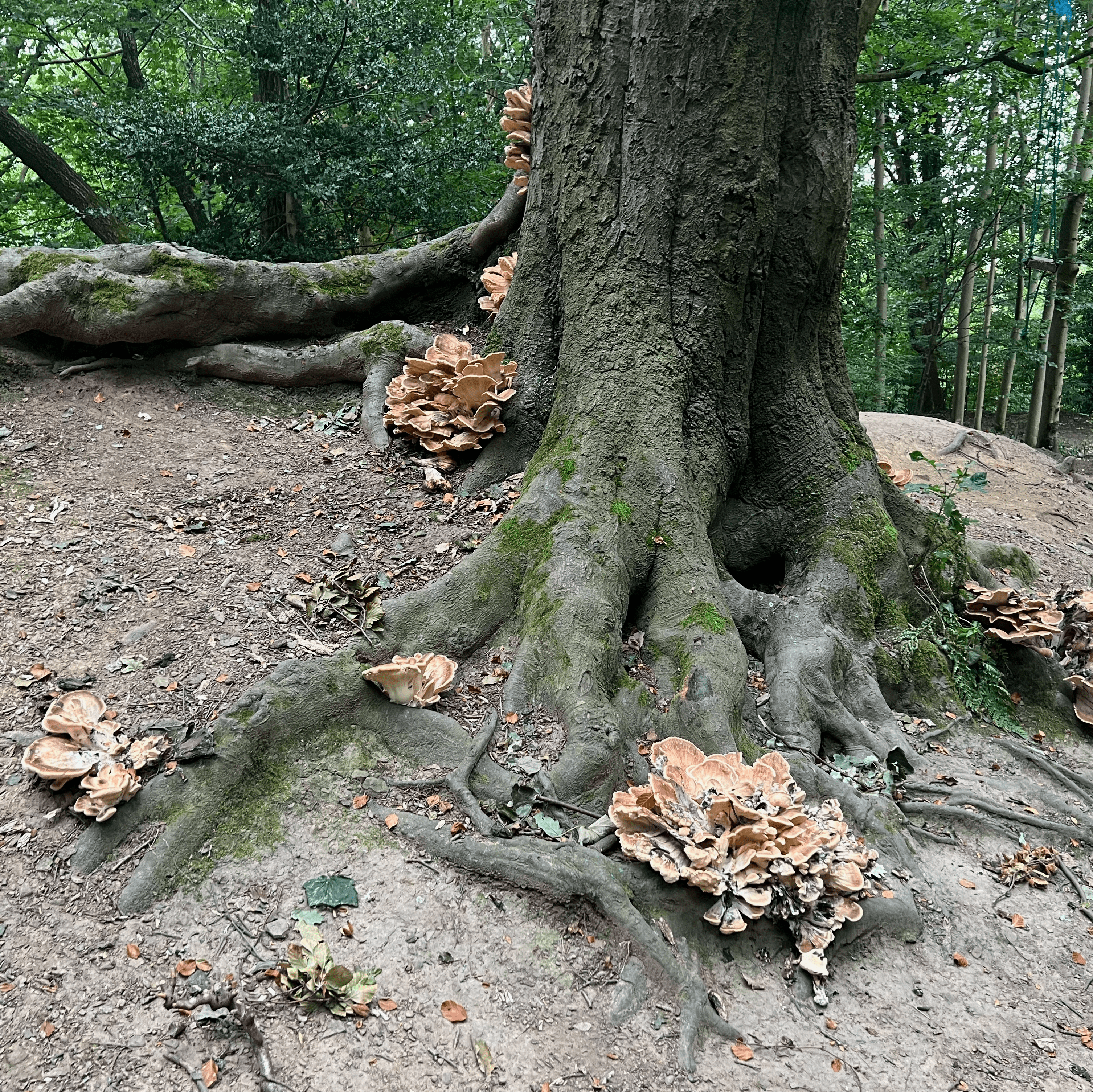As the leaves change colour and fall away, Autumn reveals more than just the beauty of the season – it also offers a unique opportunity to check your trees for signs of disease. One of the most telling signs is the appearance of fungal fruiting bodies. These are the visible reproductive structures of fungi, and while they may look harmless or even interesting, they can be a key indicator of a deeper issue affecting your tree.
Why Autumn?
In Autumn, many fungal diseases reach their fruiting stage, making it the perfect time to spot potential issues. The cool, damp weather provides the ideal conditions for fungi to thrive and become visible. Due to more spores from fungal fruiting bodies at this time of year it is also not advised to prune your tree as it may be more susceptible to disease. It would be far better to wait a little while in the prune your tree in the depths of winter, but before spring.

What to Look For
Fruiting bodies can take many forms, such as mushrooms, brackets, or conks growing on the trunk or at the base of the tree. These structures are often a sign that the tree may be suffering from decay or other internal problems. However, simply removing the fruiting body won’t solve the problem – in fact, it could make it more difficult to diagnose the issue.
Leaves browning early for falling early could also be an indication of a problem with your tree health. if you see die back from the ends of your trees branches it is best to consult with a professional tree surgeon or Arboriculturist.
Don't Remove the Fruiting Body
It may be tempting to remove these fruiting bodies, but this won’t help the tree. Fruiting bodies are merely the outward sign of an internal fungal presence, and removing them will not stop the fungus from continuing its work inside the tree. Instead, it's important to let an arboriculturalist assess the situation and determine the best course of action.
What Should You Do?
If you notice any fungal growth or signs of disease, we recommend taking a photo of the fruiting bodies and keeping a record of the tree's overall condition. This can help a professional arboriculturalist identify the type of fungus and the extent of the potential damage.
Seek Professional Advice
Not all fungi are harmful to trees, but some can be a sign of serious issues. That’s why it’s important to always consult with a professional arboriculturalist if you suspect your tree may be diseased. Early detection and proper care can make all the difference in preserving the health and longevity of your trees.
Can I Remove A Diseased Tree That is Protected
It is possible to remove a tree that is dead dying or dangerous, but, you have to be able to prove to the council that your actions were reasonable and that they were to prevent damage or a dangerous situation. A diseased tree does not necessarily make a dangerous tree. If we were to cut down all our trees that had some kind of disease we would have a lot fewer trees. Read our blog on what tree preservations are and how to apply for one.
At ACC Tree Care, we have the expertise to help you identify and treat any tree health issues. If you're unsure about the health of your trees, contact us today for a professional assessment!
Stay vigilant this Autumn and protect your trees!
